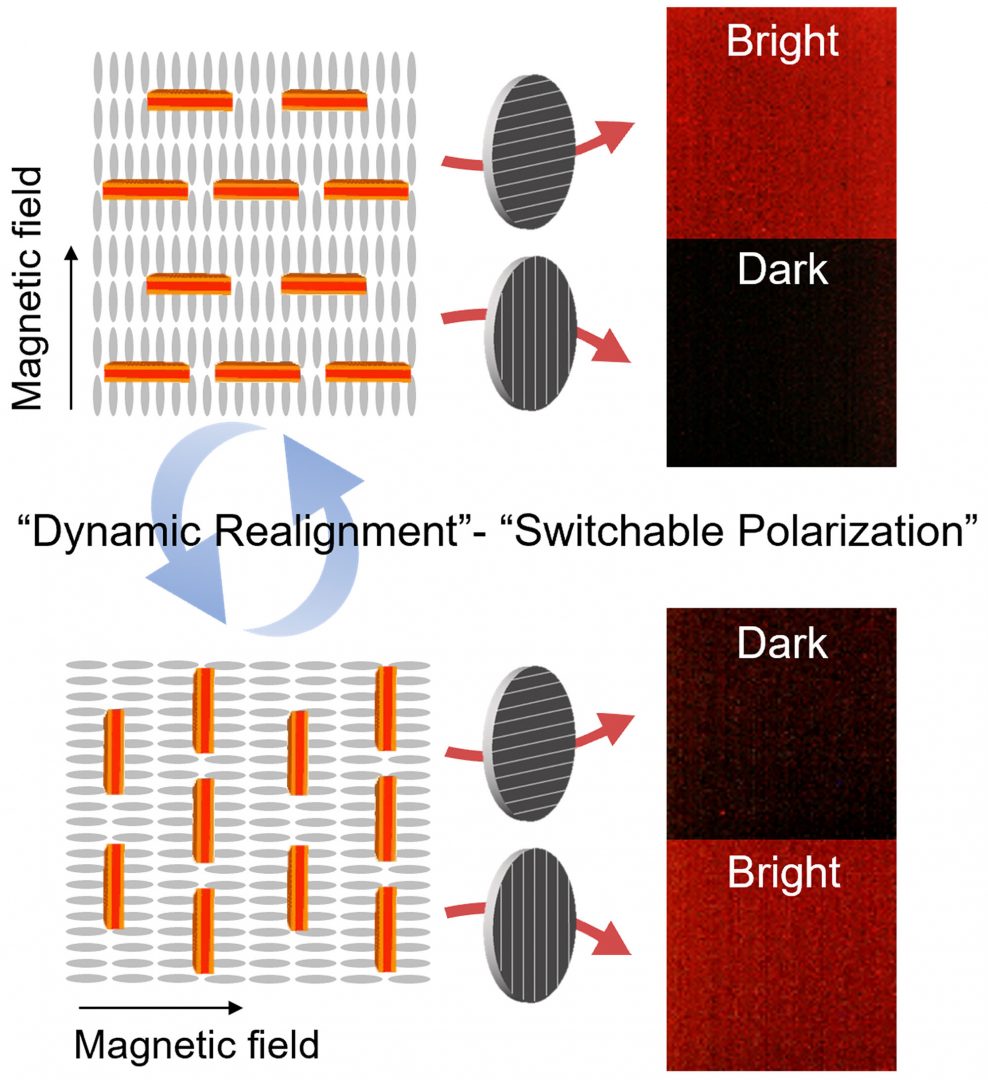
The image shows bright and dark states in polarized optical microscope images corresponding to different orientations of CdSe nanoplatelets which are aligned by a magnetic field. The alignment direction is “horizontal” in the top case, and “vertical” in the bottom case. As a result, the emission through polarizers changes from bright to dark (or dark to bright).
This work demonstrates the potential of liquid crystals as a versatile medium for controlling the orientation of anisotropic optically-active nanomaterials.
High stability dispersions of CdSe/ZnS nanoplatelets were realized in a composite system consisting of a liquid crystal polymer and labile small molecule mesogens. The orientation of the LC director is controlled by a magnetic field, and the LC director orientation in turn controls the orientation of the nanoplatelets. Switching the field direction results in a rapid change of orientation of the nanoplatelets, which is visualized in polarized optical microscope images.
Such dynamic alignment of optically-active nanomaterials may enable the development of programmable materials for photonic applications. The methodology developed here can be applied to the design of anisotropic nanomaterial composites for a broad set of related nanomaterials.
